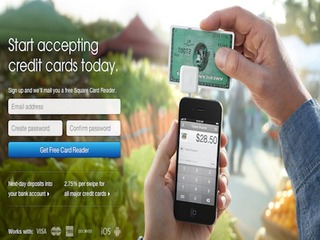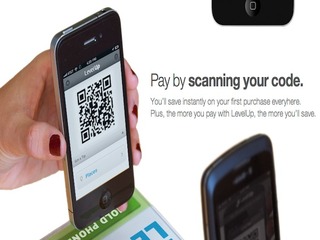
Cash is going to be a thing of the past if mobile and Web payments continue to work their way up the ladder in commerce.
Research out today from Gartner says that this year will see more than $171.5 billion in mobile payment transactions. That’s a whopping 60% increase on 2011′s $105.9 billion. This means that 212.2 million people (up 32% from 160.5 million in 2011) are using some form of mobile payment service.
And while the technology is out there to offer near-field-communication between smartphones and POS systems, it is Web transactions and SMS services that are making up the bulk of these digital transactions.
I can’t imagine what the numbers will look like in the mobile payment world when devices like the iPhone and more Android smartphones start adopting the NFC-chips needed to turn your phone into a wallet.
Gartner sees digital mobile transactions reaching $617 billion by 2016 — but these factors in a slight slowing-down in growth to 42%.
SMS, Gartner research director Sandy Shen notes, is still the primary method used in making payments in developing markets, while in more developed markets, most transactions are made via mobile Internet portals.
Shen also predicts that NFC will be used, but not for payments primarily: “Ticketing, rather than retail payment, will drive NFC transactions,” she says.
Gartner also predicts that merchandise purchases will drive transactions in North America and Western Europe in the years to come. These will include e-commerce purchases where users buy online, as well as in-store purchases. Major e-retailers such as Amazon and eBay have developed strong mobile storefronts and have seen significant growth from the mobile channel.
In developing markets, money transfer and airtime will account for most transaction volume, and money transfers will account for the largest portion of the transaction value because of the demand for secure and efficient ways of storing and transferring money.
It is also worth noting that Africa tops all regions in transaction value throughout the forecast period, benefiting from a higher proportion of money transfer transactions that have higher value per transaction than other use cases.
Other advances in mobile payment
This report comes just two weeks after the two of the biggest players in the credit card players are now in the mobile payment game: Visa and MasterCard. Each launched their online digital wallet services: V.me (Visa’s) and PayPass Wallet Services (MasterCard) and now we are off to the races to see if either of them can break the lead away from Square.
These new digital payment services were clearly created in response to the growing market Square has built and that companies like PayPal, LevelUp, PayDragon and Bump have put their own spins on.
MasterCard unveiled its new PayPass Wallet service this month as an extension of its PayPass brand, which already offers tap-and-go, NFC-enabled payments that work via NFC phones, cards, key fobs, or mobile tags at more than 441,000 locations worldwide.
MasterCard’s PayPass Wallet is an open solution, and allows consumers to add any of their Visa, American Express and Discover cards to the app and pay without pulling out any plastic.

The app will also keep your shipping info on file if you want to use the service for online purchases.
Partners that have already signed on to offer this payment option are American Airlines and Barnes & Noble. Both merchants will add the PayPass Online checkout button on their websites.
V.me also released a mobile option to help those who are shopping online, whether via web, mobile or tablet. The service stores any of you Visa, MasterCard, American Express and Discover cards in it for fast Internet transaction.
Visa thinks that this is a more efficient and secure way to shop online since the merchant still receives your payment through Visa’s network, but your 16-digit card number is not displayed on the site, which adds another layer of security.
Visa also plans to introduce a mobile payments element using NFC, QR codes and app technology to allow people to buy products through the Visa network much like they use Square and the like but is not releasing a timeline when that will be live.
The company announced its beta launch for V.me, with merchants PacSun.com and Buy.com. Now, on both websites, you will see the V.me seal and can make impulse buying even faster.
POS in the future
Both V.me and MasterCard’s PayPass Wallet highlighted that they will roll out point-of-sale and as a mobile application in the future.
Square already has a POS system that leverages the iPad called Register. And PayPal is working on its own so it seems like Visa and MasterCard are following suit but certainly not keeping pace as you would think their money could assist in doing.
American Express in also in the game, or at least announcing its hat in the ring. The company previously announced Serve platform, which allows peer-to-peer payments much like Bump and Square offer.
Last month we reported that Square appears to be hitting the pavement for new funding and an awe-inspiring valuation of $4 billion, according to multiple sources.
If the company hits its goal, and with all the buzz around the mobile payment service I bet it will, it will have quadrupled its worth in a matter of just 10 months.
The three-year-old company founded by Twitter pioneer, Jack Dorsey is changing the whole system of transactions across the nation by providing cardless, and now register less, systems of retail.
Over the last few months, Square has been rolling out new apps, services and deals with millions of individuals, restaurants, and retail locations that want to reduce hardware costs and join the techno-savvy paperless revolution.
Also reported last month, was the information that mobile payments could become as common as swiping a credit card by 2020.
Approximately 65% of experts surveyed in the study agreed that mobile payments would take off by 2020, while 33% of experts agreed with a more negative statement, which said that consumers wouldn’t trust mobile payments to replace cash and credit cards by 2020.
Recent Pew Internet surveys have found that one in 10 Americans have used their cell phone to make a charitable contribution by text message; more than one-third of smartphone owners have used their phones to do online banking services like paying bills or checking a balance; and 46% of apps users have purchased an app using a mobile device. So the comfort is growing with phone transactions, but all of these mobile payment companies that have been making waves over the last few months are hoping that you’ll feel fine leaving home with just your phone in the very near future.
Now may be the time when everyone jumps in the pool, but the next big deal will be how each company differentiates its service and who can continually innovate their products and sign-on the most customers. There is always room for many players in the payment game, but as far as technical innovation and imagination, Square may still prove to have the upper hand.
(Image Source: Mobile Payments)

























